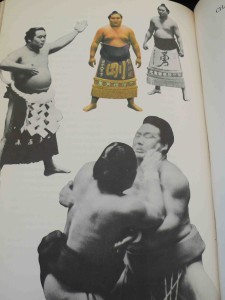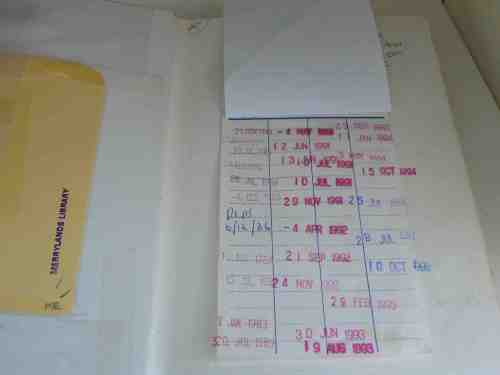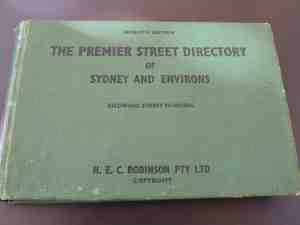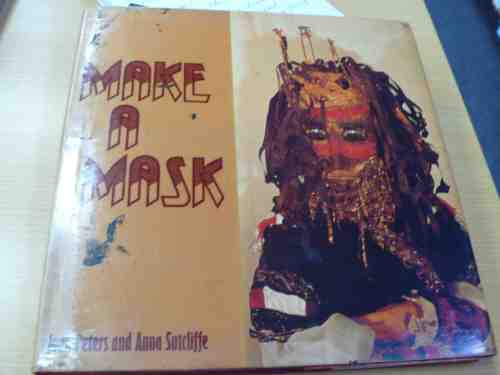
The library in Merrylands is located on Miller St beyond the tempting Merrylanda Cakes, with line of frog cakes and meringue mice under the counter, and the tiny community op shop where the old ladies were discussing their hatred of capsicum “and when you order a pizza they put it all over it, even if you ask them not to”.


It’s the central library for the Holroyd district, known officially as the “Merrylands Central Library”. When I reached the corner of Miller and Newman streets I ascended the stairs and entered the library, which is a modern building with a lofty ceiling and big windows spilling sunlight onto the purple lounges where people were sitting reading newspapers. Although it’s not a new library, (the plaque at the entrance – all libraries have these plaques – said it was opened in 1999, back when I was searching fruitlessly for the Vinnies), it is the newest I have been to so far for Biblioburbia. Although I have a nostalgic attachment to 60s-era libraries, it was a relief to be in a big, light space.
As I walked in two little girls came spilling out of the kids’ area. “Library!” one yelled. “Library!” yelled the other in return, as if calling to a missing friend. They continued running in and out of the Vietnamese books section, yelling. It was kind of funny, although would have been annoying if I was trying to concentrate on something.
During the week I read another Sydney Morning Herald article about the future of libraries, this one about the State library and plans for its refurbishment. I’ve never found the State Library an easy place to work, so I’m curious about the plans. I like the idea that the deeper into the library you go, the quieter it gets, but I did laugh at this:
“…the renovation’s biggest aim is to fundamentally change the library’s public image, to show that a place of learning can also be a fun palace.”
I hope it is not a typo.
For the little girls, the library certainly was a fun palace. I watched them run amok before being stopped by a librarian on the stairs that lead up to the non fiction section. They paused and stared up at the figure of authority, and turned back from pink frilly monkeys into little girls.

I have started to notice that there are many details that all libraries have in common. They are the types of things you don’t notice straight away and are beyond the obvious: red plastic baskets “for your convenience” and indoor plants, for example. The more attention you give to something, the more you notice. Then there are the people who are always in libraries, such as the men reading newspapers. All libraries seem to have at least one of these men, deeply settled into their papers and reading every word.
Merrylands library had a number of newspaper readers. Two old men were sitting on seats against the back wall, reading Chinese newspapers and occasionally commenting to each other on the stories. A couple were sitting side by side at a table, both reading newspapers. And a man was slowly going through the Sydney Morning Herald as he sat on the lounges, his daughter beside him. At first I thought she was asleep, but then I saw she was playing on a Nintendo, which she was holding inside an open book. Upstairs, in the study area, a man was reading an Arabic newspaper, his feet up on a chair. Happy Ramadan! I read on the front of the paper, a broadsheet that hid his face so all I could see of him was the paper, his hands gripping it, and his legs.
With all this newspaper reading going on I thought about the library as a vast loungeroom. Seeing each person in their own space, reading in the sun. The couple reading the newspaper together, the old lady reading a large print novel, the father and daughter. All that was needed was cups of tea and coffee, the steam curling up in the sunlight.

I fought the temptation to make my own loungeroom away from home downstairs and looked over the non-fiction collection. One of the questions that Simon asks me when I get home from exploring a library is “do they have old books?” His hope is to detect libraries that don’t have aggressive weeding policies and so there is more hope of finding unusual old books in them. I was happy to report to him that yes, Merrylands library does have old books. I was looking in the Japanese History section, for information about the Floating World for the zine I am writing. I picked out “The Concise History of Japan” by Noel E Busch, published in 1972.
This book had served many school assignments well, judging by its condition. A few pictures had been cut out of it, rather specifically in some cases:

Artwork had been added – perhaps a comment on the pleasure of the tea ceremony pictured here:

From the captions under the cut-out pictures, I ascertained the vandal had been doing a project about Kabuki, or as they refer to it:

The word is right there in front of them and they still spell it wrong! Although I’d been attracted to the appearance of the book and its cool collage graphics, I found it was engagingly written. Some of these kind of history books, made as general introductions for school students or amateur historians, can be very dry, but Noel Busch had a sense of humour, writing about “small, dumpy, owl-eyed Hirohito” and using attention grabbing introductions: “The reason that Japanese babies do not cry is by no means an occult one.” The fact about Japanese babies not crying is mentioned throughout, which makes me wonder if Mr Busch was a new father when he wrote it, and obsessed with the idea of a country of quiet babies.

Opening The Concise History of Japan I noticed 4 sheets of Due Date slips, stuck one on top of one another and full of stamps until the early 2000s, when barcodes must have taken over. The older books have these Due Date histories, which I like to browse for significant dates such as birthdays, or try and imagine dates like 11th May 1987. I was alive on that day, but what on earth was I doing? It was a Monday, I was probably at school:

Here is a link to calendars from 1887 – 2087 to further your musings about particular days in history.
The non-fiction section of the library was upstairs, a row of study desks beside it. I walked slowly past, spying on what people were doing. As well as the guy reading the newspaper there were numerous people set up with books around them, writing in notebooks. One boy, with the distracted look of the student who wishes he was anywhere else, slowly filled in a form, a squat bottle of white out beside him. This object caught my attention, it seemed touchingly outdated. It wasn’t even a white out pen, which I remember being a luxury item when I was in primary school in the 80s.
Beyond the study area were the computers, all of which had signs taped over their screens, announcing the impending upgrade. The photocopiers, too, were out of order. This meant this section of the library was rather ghostly, and as I stood there a librarian was suddenly at my side, asking if she could help me. “Just looking,” I said.
“Well go ahead,” she said in a not totally friendly manner, gesturing towards the local history section.
Within this section I found a large collection of Sydney street directories. I had already been thinking about street directories, as I had brought one with me to help me find the library. I felt old fashioned getting it out and consulting it, embarrassed not to be peering into an iPhone. Or maybe not embarrassed, exactly, more conscious of the fact that I was using an outmoded object.

I like street directories, being able to hold the whole city in my hand. My street directory is a compact version from 2009, with once corner chewed by my rabbit and stickers over the faces of two people on the front, whose tanned faces of glowing backpacker health I found offensive. Sometimes I browse through this street directory, opening pages at random and seeing where I end up. This is a game I have played since I was a child. Between this and my Due Date game, I am revealing to all who read this the kind of private, tiny amusements I take for granted other people share. Writing them down, however, I’m certain they do not.
One particular old street directory caught my attention.



You could follow the book’s life, from it’s original owner in Hurstville, then to Ashwoods on Pitt St (Ashwoods, a place I have fond dusty record search memories of, relocated a number of times before closing down for good in the last year – it opened in 1932! I was sad when it disappeared), then Berkelouw books, before being acquired by the library in 2003. I couldn’t see a date on it, and know that it is probably not quite as old as I imagine it to be. My guess is that it is from the 1950s, judging by the density of the streets in what is now the middle ring of suburbia. Facing many of the pages of maps are ads:

These, more than the maps themselves, give us clues to the time in which it was printed. A time of foot parlours and permanent waves, and insistent, but polite, copy. In the absence of images, the text has the full responsibility of the message.
A handwritten note marked one of the pages:

K.G.R is King Georges Road, I can work out that part of the mystery at least. I thought of L. Tumpane driving to Beresford Ave, the same fingers that produced the cursive script on the note resting on the steering wheel.
For the roots of my street directory obsession, you would have to look way back into my childhood…but we won’t, this time. Instead, if you are interested, I wrote about street directories in my first zine, Psychobabble.
I took some more books downstairs to one of the tables for further investigation. The man reading the SMH was now onto the business section, another thorough paper reader, like the man from Sans Souci library. At times in my life I have tried to read every word in the newspaper, even just in the news section, but I never get very far. I read first paragraphs, get distracted, then go to just the headlines…although it’s not my fault, blame the inverted pyramid style of news writing, news is meant to be read that way.
I’d picked out a few other Sydney books to look at, “Sydney” by Jan Morris, from 1992, which describes the city as “the most hyperbolic, the youngest in heart, the shiniest” of all cities of the British empire. (Jan Morris is British.) Although prone to flights of rhapsodizing, it looked to be fairly interesting, if a bit dated.
My concentration was broken by the sound of a librarian telling off another child for playing on the steps. I got the feeling this was a regular occurrence. Steps, like roads, are irresistible to children. Once the children were back on the floor again the library settled back into its usual ambience. Newspaper pages turning with a crackle, kids voices from the children’s section, the occasional cough, the bleeps of barcodes from the desk.
The other book I had about Sydney was “Untourist Sydney” by Jacqueline Huie. There was no entry for Merrylands, but, in the inner west section, there was a picture of Maurice.

Maurice’s shop has closed and been replaced by a coffee school and cafe. I would go to Maurices to buy Lebanese bread, coffee, nuts and tahini, things like that. A number of times he asked me where I was from, and upon tracing my family back to a great grandmother born in Iraq, he would envelop my hand in his and say “we are neighbours”. A stretch, perhaps, but it was nice to feel some kind of ethnic bond. Then came a time when I didn’t go to Maurice’s so much, and then I went past and it was gone. I still feel guilty for the times I bought supermarket coffee instead, and I still miss Maurice when I go past the poxy coffee school, guilty for the gentrification I am implicit in.
I got up to return some of my books to the reshelving trolleys. I felt self conscious doing this, although I’m sure this is what they are there for. It feels wrong to put a pile of random books beside a neat series of books with all their call numbers in order. I put them down and scuttled away to look over the fiction collection on the ground floor. I wandered into the young adult section, startling a girl looking at the graphic novels. She looked up, guilty, caught looking at books off topic – the book on the top of the pile she was holding was called Bible Lands. I moved away; she needed the graphic novels more than me and I didn’t want to put her off.
My place at the table had already been claimed by a boy who had quickly scattered his study materials all around him. I went to one of the couches and looked through a 1962 copy of The Schauer Australian Cookery Book.


As the testimonials attest to, this is a kind of bible for housewives. There’s one section in such books of interest to me, the cakes. The savoury dishes are too meaty for me, sometimes stomach churningly so (calf’s head soup?). The cakes, however, show a breadth and appreciation of the form not seen in today’ss. Out of the fifty or so pages of cake recipes, three caught my attention. Watermelon cake (not flavoured with watermelon, but made to look like watermelon! I am actually going to make this), Mushroom cake (similar concept) and Rainbow Sandwich cake, which has a well in the top filled with hundreds and thousands. Other recipes had good names: Rainbow jam tart! Fairy baskets! Sweet little boats!
All the cake recipes were making me feel overcome. I shut the book and looked up, noticing two librarians conferring on the top level, looking down in what could be my direction. Immediately I put my head down again. In the absence of the photocopier, I had taken a photo of some of the recipes of interest – after transcribing the Watermelon Cake recipe took what felt like forever. Was this illegal? One of the librarians came downstairs and walked over to the lounge area. I was ready to apologise for everything I had done wrong when he walked straight past me to the woman in the corner, using her laptop in a rather unusual way. Instead of having it flat on the table in front of her, she had it angled up at 45 degrees, so the screen was facing down. I guessed this was to deflect the sun from the screen, although I wondered why she just didn’t move tables. The librarian asked her to move her lounge chair, as she was blocking the emergency exit. “Patrons keep pushing the chair back,” he said, and I supposed this was rather like the kids playing on the stairs. Any job has its repeated situations and phrases. Perhaps the emergency exit scenario is like my scenario with asking students if they know the correct way to use a semi-colon.
I closed the cake book, thinking of Merrylanda Cakes only a few hundred metres down the street. Distracted now, it was time to leave the library. I put my remaining books back and passed the desk where a librarian was explaining yet again how to log in to the online system to an elderly patron. I endured the slight nervousness that always comes upon me when walking through the electronic gates and walked out of the building and back onto the street.
When I was looking in my street directory the night before at the suburbs surrounding Merrylands, one in particular stood out to me. Greystanes. Possessing Sydney’s most unappealing suburb name, other than perhaps The Spit, my desire to go there was for the very opposite reason to me going to Merrylands or Sans Souci. Grey Stains! (To be adult about this, “Stanes” is derived from the Scottish for “stones”.)
After a lingering perusal of the Merrylanda Cakes’ window, I went to catch the bus to Greystanes. In this part of Sydney there are only private buses, which form a confusing and patchy network for the uninitiated. I was lucky to arrive at the stop only a few minutes before the 806 bus arrived. It was to take me, and a dozen or so old ladies, along Merrylands Road. The bus passed the shops and then rows of houses, either mid 20th century fibro or brick bungalows or their replacements, half size McMansions (Junior Burgers?). Behind me, a conversation started up between a couple who were discussing a friend or a family member who routinely “gets sectioned and pumped full of meds for 48 hours, then goes back home, it’s like a holiday for her”. The consensus about this individual was not sympathetic.

Typical Greystanes house, with, indeed, some grey stanes out the front
The bus passed a park with emus and kangaroos, the kangaroos streetched out lazily in the sun. Across the street from here was a house with a faded ‘canaries for sale’ sign on the front lawn. I thought of all the dogs and cats and birds and guinea pigs that must be hidden in backyards and inside the houses we were passing. The houses gave nothing away, doors shut, curtains drawn, and there were remarkably few people around.
Greystanes is the type of suburb that is dominated by cars. I got off the bus and walked along the road with the exposed feeling of being the only pedestrian. Cars sped by, my footsteps felt tiny. I passed a childcare centre painted bright yellow and then came upon the Greystanes Community Centre, a supremely uninviting building that includes the library on its basement level.


Inside there was only one person there, a man sitting at the only desk, flipping through a folder of maps of the local area. I browsed the history books at the same time as looking around. Near me, a librarian was in the craft section, pulling out books about crochet. The whole time I was in the library she was busy, fanatically re-ordering the shelves.
As the desk was taken up by the man with the maps, I sat down in the fiction section at a low table with newspapers on it, and started reading the Parramatta Advertiser. I like local papers and the micro-level of their stories, and always read the ones that appear like magic on my lawn every Wednesday night (in two years I’ve never managed to see the moment of delivery). My favourite story from the Advertiser was “Driven Insane by Bad Sanitation”, in which truck drivers are accused of filthy behaviour in the Smithfield industrial estate. “They leave rubbish, dirty underpants – they wipe themselves with an old t-shirt, fast food packets, you name it,” one man is (memorably) quoted.

As I read the local paper, the profile of a record store in Parramatta, a description of the hordes of people at the opening of Auburn Costco, an elderly woman came up to the desk to return some books. This spun out into a conversation with the librarian, which covered quite a lot of detail about this woman’s life. I found out:
1. She is 87.
2. She has always been an active person. Walking keeps her young.
3. She has to tell her husband to get up and move as he just sits there.
4. This husband was 89 yesterday.
5. She used to be bowling club president.
6. She had a heart operation and a.) the doctor is surprised by her recovery b.) some details about being “cut open” I tried not to listen to c.) she was treated very well at Westmead Private Hospital
7. “I’ve never seen anything look so changed.” This was in reference to the library’s recent renovations.
I was surprised the library had recently been renovated. It was a very claustrophobic space, with a thick air conditioning duct running right through the middle of the room. I knew that somewhere outside there was a sunny day, but inside the library it was gloomy in the way of all basements. I started to wonder what it must have looked like before.

“We’re still settling in,” said the librarian, which could have been a way to express that she didn’t exactly love the renovations herself.
8. “Don’t tell me your gentleman boss has the day off.” As if on cue, the gentleman boss entered with his lunch in a bag and took over conversation duties with the woman, who he seemed to know well.
I gave up listening to their conversation and made a quick survey of the fiction section near where I was sitting. Particular large print books attracted me, such as Snake Vengeance, a western, and Empty Saddle by an author with the unbelievable name of Cherry Wilson. Pulp novels often have much better names than literary novels, the worst example of which I saw was The Deep Blue Sea for Beginners. Any book title that is “for beginners” that is not an instruction manual makes me grind my teeth. Non-fiction titles for fiction drive me crazy, like the author assumes they have something important to tell you about being alive. They might, but like being told “you two are going to be great friends,” it is more likely to be the opposite.
Just before I leave a girl comes in with a laptop and big thick folders and sits down at the other end of the desk to the man. She gets out some practice exams and settles in to do them. Seeing this I felt a great surge of thankfulness that I am not a high school student. Occasionally I have dreams in which I’m back in high school, often having to do an exam on something I know nothing about. I wake up feeling relieved that it’s not real. The girl looked happy enough, with her folders and pencilcase and computer. She started her exam and I left the library, happy to have the sky for a ceiling again as I walked back to wait with the old ladies at the bus stop.
 I can only imagine the borrower looking her best to confront a dangerous situation, which might result in a conversation with God, maybe about adventure stories?
I can only imagine the borrower looking her best to confront a dangerous situation, which might result in a conversation with God, maybe about adventure stories?

















































